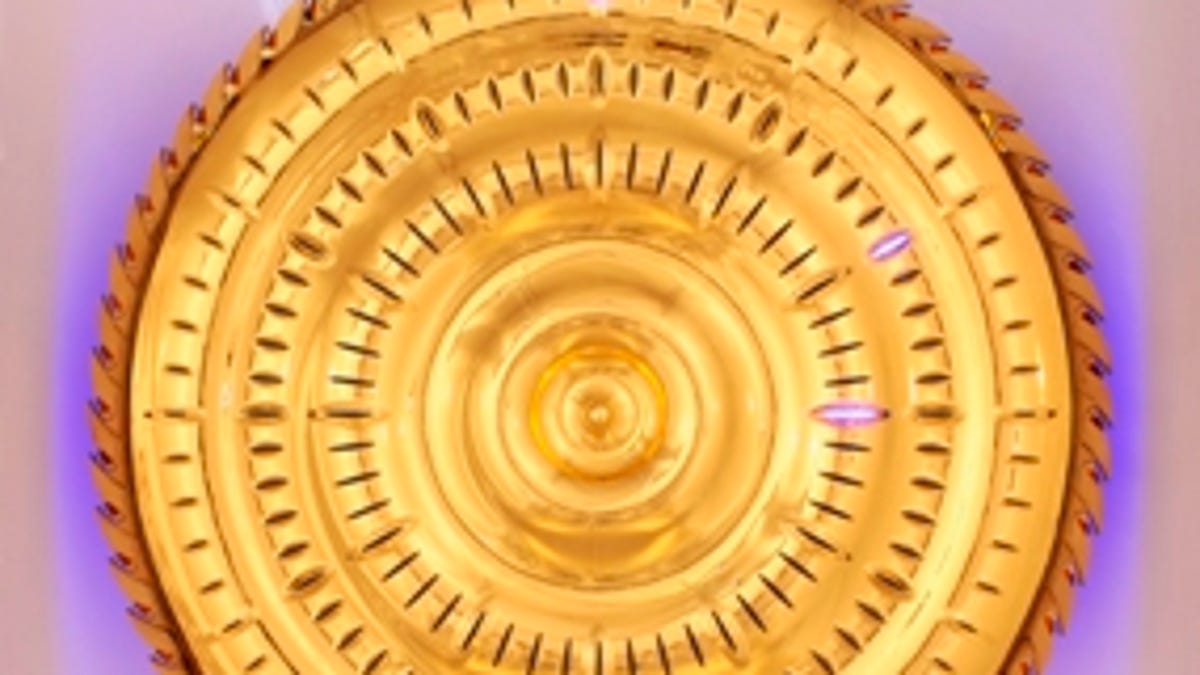Stephen Hawking unveils oddest clock ever
Famed cosmologist is on hand at University of Cambridge to introduce the strange and provocative Corpus Clock, which conveys a somber message about our relationship to time.

A $1.8 million mechanical clock featuring a massive time-eating grasshopper made its debut at the University of Cambridge Friday, and famed cosmologist Stephen Hawking was on site to introduce the strange and provocative timepiece.
The Corpus Clock has no hands or digital numerals, but instead features slits cut into its gold-plated face. As the escape wheel moves, darting blue LED lights behind the openings pause at the correct hour, minute, and second.
Atop the clock, the blinking, tail-wagging grasshopper (or "chronophage," meaning "time eater") perpetually advances the perimeter of the 4-foot-wide round dial, devouring minutes in its snapping jaws to remind viewers that time is fleeting.
But even those with excessive amounts of cash and an affinity for giant insects won't be able to buy a Corpus Clock for their living room anytime soon. It was designed specially for the exterior of Corpus Christi College's new library as both a radical new way of telling time and a hard-to-miss piece of public art with an existential message.
On the hour, the college explains, the clock "reminds us of our mortality with the sound of a chain dropping into a wooden coffin. More playfully, the clock plays tricks on the observer, seeming occasionally to pause, run unevenly, and even go backwards."
The Corpus Clock runs on an electric motor, which reportedly will last for the next quarter century.
Seven years in the making--with part of it engineered underwater at a secret Dutch military research institute--the clock was created by inventor and horologist John Taylor, a student at Corpus Christi College in the '50s. He designed the timepiece as a tribute to celebrated 18th century English clockmaker John Harrison, inventor of the "grasshopper escapement" mechanism, an internal gear device. Watch a video of Taylor and his creation here.

